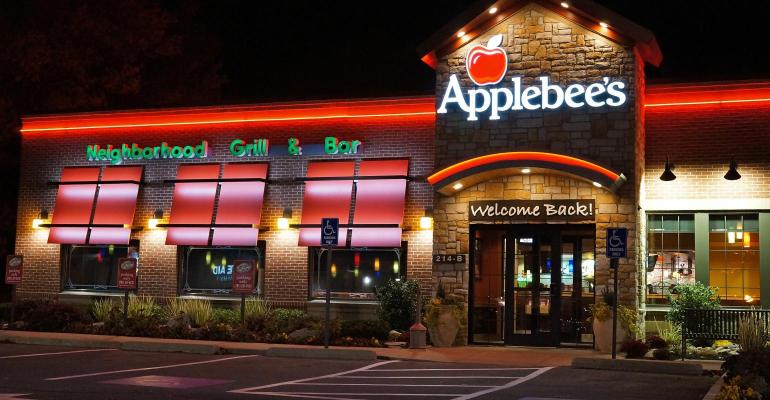Dine Brands Global Inc., parent to casual-dining Applebee's Neighborhood Grill + Bar and family-dining IHOP, has been cautious on price increases, seeing it as a competitive advantage to increasing market share, executives said Tuesday.
The Glendale, Calif.-based company, which released earnings for the second quarter ended June 30, said its franchisees have raised prices to accommodate inflation in commodities and labor.
“Across all inputs,” said John Peyton, Dine Brands CEO, on an earnings call, our restaurant brands experience a 22% rise in commodity costs during the second quarter, but Dine’s P&L was not materially impacted because of our asset-light model.” For the second half of the fiscal year, he said Applebee’s expected commodity inflation to ease, with low teens forecast for Applebee’s and mid-teens for IHOP.
John Cywinski, president of Applebee’s, said the brand’s franchisees have raised prices about 7% over second quarter 2021.
“Pricing does not occur in a vacuum in the restaurant industry,” Cywinski told analysts, “and our franchisees remain fully aware of the market share opportunity this current environment represents.”
He noted the United States has about 210,000 casual-dining restaurants and noted “about 85% of these are low-volume, independently owned restaurants with a challenged business model. Because of their very small scale, it often surprises folks at the Top 10 casual-dining brands only account for about 4% of total CDR restaurants.”
Applebee’s, with 1,570 units, has an advantage with size, Cywinski added.
“When it comes to pricing strategy, our savvy and sophisticated franchisees understand this very delicate balance between restaurant profitability and guest affordability,” he said. “Brands and franchisees with scale and strong culture who have earned the trust of their guests throughout COVID and have demonstrated the ability to be both innovative and nimble will win big over the long haul. I genuinely believe this remains an increasingly leverageable point of difference for the Applebee's brand moving forward.”
Applebee’s made the strategic decision earlier in August to expand menu items from the virtual Cosmic Wings brand to the Applebee’s core menu, Cywinski said.
“Broadening the availability of popular products like Cheetos Wings, Cheetos Cheese Bites and waffle fries to 100% of our guests will allow us to fully leverage this opportunity in terms of product awareness and velocity,” he said, adding that the virtual brand will remain available in the majority of Applebee’s markets.
IHOP’s virtual brands, Thrilled Cheese and Super Mega Dilla, are in more than 1,000 restaurants, said Jay Johns, president of the family-dining division.
“Our strategy is to continue the growth of these virtual brand partnerships as we see incremental revenue and profits at participating restaurants,” said Johns.
While April and May were strong for both Applebee’s and IHOP, Peyton said the brands saw a “modest decline in traffic” in June amid consumer inflation and gasoline price pressures. However, he noted that tailwinds appear favorable in the second half of the year.
For the second quarter ended June 30, Dine Brand’s net income slipped to $24 million, or $1.45 a share, from $29.4 million, or $1.69 a share, in the same period a year ago. Revenues for the second quarter were $237.8 million compared to $233.6 million for prior-year period.
Applebee’s year-over-year comparable same-store sales increased 1.8% for the second quarter. Off-premises sales accounted for 25.6% of the brand’s sales mix, representing average weekly sales of about $13,900.
IHOP’s year-over-year comparable same-store sales increased 3.6% for the second quarter. Off-premises sales accounted for 21.3% of sales mix, representing average weekly sales of about $8,300. Of that 21.3%, about 12.9% percentage points were delivery and 8.4% were takeout, Johns said.
Dine Brands Global, with Applebee’s and IHOP, has more than 3,400 restaurants combined in 16 countries.
Contact Ron Ruggless at [email protected]
Follow him on Twitter: @RonRuggless





